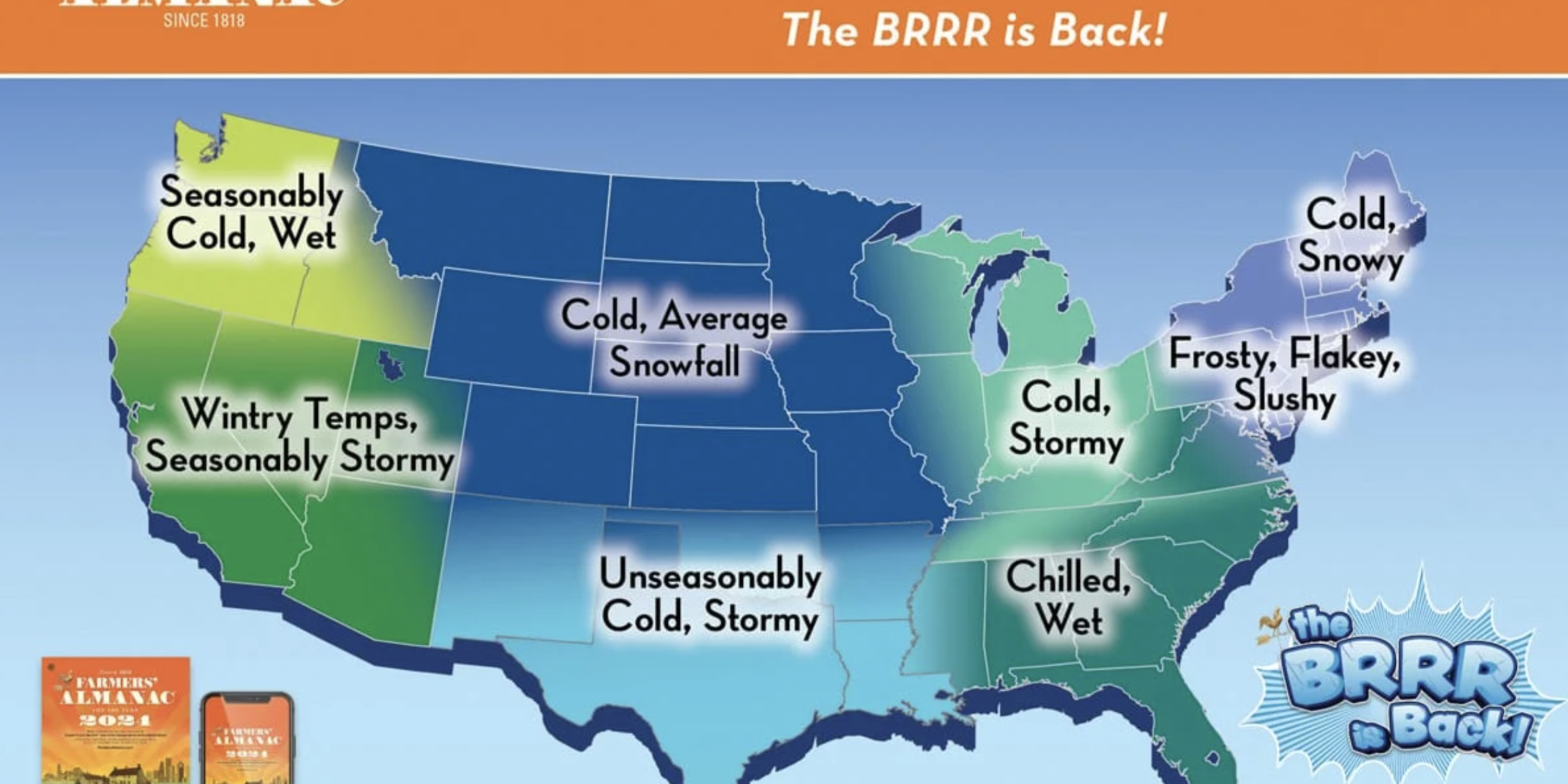As the days grow shorter and the air turns crisp, it’s that time of year again when the winter forecast discussions take center stage. Two respected sources of winter predictions, the Farmer’s Almanac and the Old Farmer’s Almanac, have released their forecasts for the upcoming winter season. In this blog post, we’ll break down their forecasts, offer some analysis, and delve into the science (or lack thereof) behind these predictions.
September 27, 2023 | Brian Ivey
Recap of Last Winter
Before diving into this year’s forecasts, let’s briefly recap the winter that was. Last year, many parts of the eastern United States experienced an unusually warm winter, with temperatures well above average in some areas. Conversely, the middle of the country and the western states saw an active winter, marked by above-average snowfall. This disparity was most evident in the boundary regions, such as the Upper Midwest, Northern Plains, Rocky Mountains, and much of the West. The East, on the other hand, saw below-average snowfall due to the warmer temperatures, resulting in numerous rain events and minimal snow accumulation.
What’s in Store for This Winter?
Now, the burning question on everyone’s mind: What can we expect this winter? Let’s break down the forecasts from both almanacs.
The Farmer’s Almanac: Cold, Stormy, and Frosty
According to the Farmer’s Almanac, we can anticipate a winter that is characterized by cold temperatures and average snowfall. In other words, get ready for a chilly and wet season with ample snowfall. They even throw in some colorful descriptions like “Frosty,” “Flaky,” and “Slushy” to paint a vivid picture of the season ahead. As for exceptionally warm regions, the Almanac suggests that when one part of the country experiences extreme cold, another part usually enjoys milder conditions, balancing things out.

The Old Farmer’s Almanac: A Winter Wonderland
The Old Farmer’s Almanac’s forecast echoes the sentiment of a cold and snowy winter. While it may not be as poetic as its counterpart, it predicts a significant portion of the country experiencing this chilly and snowy weather pattern. It’s worth noting that such widespread, consistent weather conditions across the entire country for an entire season are not the norm, given the usual variation in weather patterns.
Understanding the Almanac’s Methods
Now, let’s peel back the curtain and look at the methods employed by these almanacs to make their predictions. Both publications rely on a mix of sunspots, moon phases, prevailing climate cycles, folklore, and proprietary formulas. They don’t disclose the exact scientific methods they use, which makes it more akin to fortune-telling than meteorological forecasting. Studies have shown their accuracy to be around 40 to 50 percent, not much better than flipping a coin.
El Niño’s Influence
One significant meteorological factor to consider is the presence of El Niño in the equatorial Pacific Ocean. This phenomenon involves warmer-than-average sea surface temperatures and typically leads to a warmer northern U.S. and a more active subtropical jet, potentially bringing increased rainfall and snowfall to certain regions. However, it doesn’t guarantee specific weather outcomes.
Stay tuned for more winter predictions as we get closer to the snow flying.
